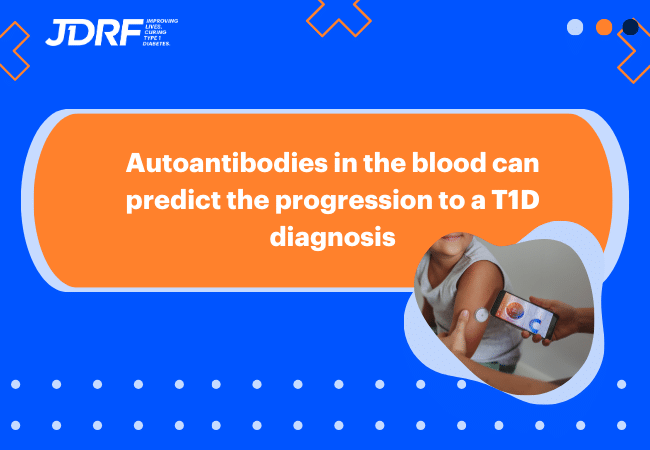T1D Research Roundup: September 2021
Our research roundups bring you the most exciting T1D research stories from around the world – the new advances in treatment, devices and knowledge that are making the biggest impact in the fight to cure, treat and prevent T1D.
Here’s what you need to know in T1D research this month:
New results from the ENDIA study
New results from the JDRF-funded ENDIA study have shed light on the changes that occur in the gut bacteria of pregnant women with T1D. The researchers found that during pregnancy, women with T1D had more gut bacteria that were associated with inflammation. It’s thought that this could lead to a higher risk of pregnancy complications for women with T1D, as well as affecting the baby after birth. These changes could potentially be affected by changing a person’s diet, making this an important area of future study for new T1D prevention therapies.
A less invasive way to diagnose type 1 diabetes
Researchers at WEHI in Melbourne have led the development of a simplified blood test as a way of diagnosing type 1 diabetes. The current gold standard for diagnosing type 1 diabetes is a series of blood samples taken during a 2-hour glucose tolerance test. Led by A/Prof John Wentworth, the team at WEHI discovered that a single blood sample taken 2 hours after a glucose drink was just as accurate at predicting diagnosis as the current method. The study compared 3,500 glucose tolerance test results from studies around the world, including the JDRF-funded Type1Screen and ENDIA projects. It’s hoped that the new results will offer a far less invasive alternative for diagnosing children with T1D, while improving screening and early diagnosis.
A newly discovered hormone that could protect beta cells
A recently discovered hormone, known as MOTS-c, has been shown to stop the immune system from attacking beta cells in mice and prevent the development of type 1 diabetes. First discovered in 2015, MOTS-c is involved in several functions throughout the body, including turning glucose into energy following exercise. MOTS-c is one of a number of hormones that have recently been discovered in the DNA of mitochondria, the energy centres of our cells. It’s thought there may be even more unknown proteins in mitochondria that could play important roles in the immune system and controlling metabolism.
Genetic triggers for T1D found in a surprising location
Researchers at the University of Auckland have discovered that a major genetic trigger for type 1 diabetes may exist in the lungs. In the study, scientists used machine learning to group genetic variants associated with T1D by the part of the body that they have the biggest effect in. They were surprised to find the biggest impact coming from genes in the lung – not the pancreas. Viral infections have long been thought to be involved in the development of T1D, and these results suggest that lung infections could be among the triggers. With further study, researchers could potentially develop new ways of preventing T1D by targeting specific lung infections.
A world-first stem cell therapy enters the clinic
Vertex Pharmaceuticals has launched a US-based clinical trial of its stem cell-based therapy, known as VX-880. VX-880 is an islet cell replacement therapy, designed to replace damaged islet cells in people with T1D with new, fully functioning islets derived from stem cells. VX-880 is the first therapy of its kind to be investigated in a clinical trial, opening up new avenues for cell replacement therapies for T1D.
Interested in hearing more about research & clinical trials? Sign up to be a JDRF Game Changer and receive regular updates on the latest T1D research.




